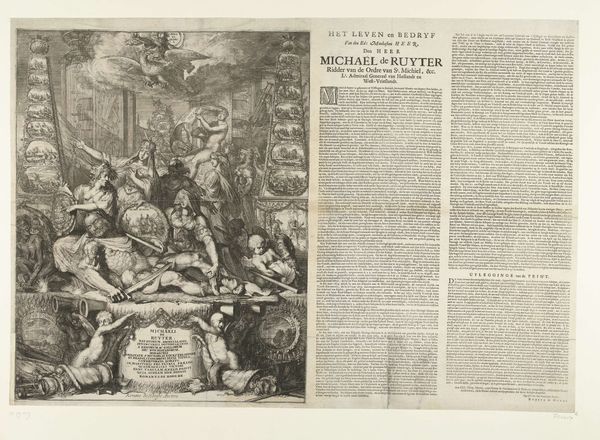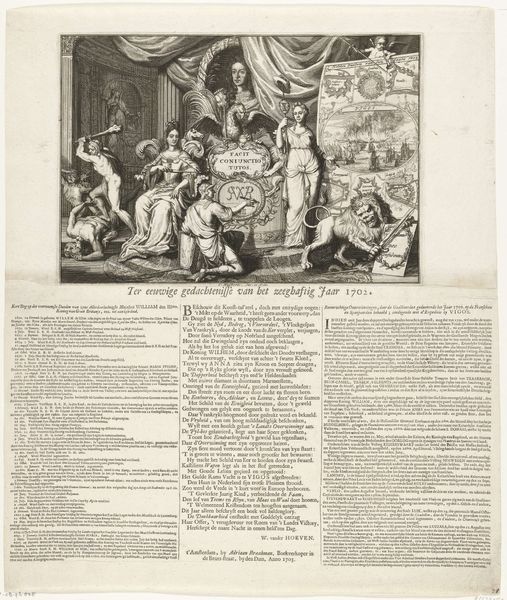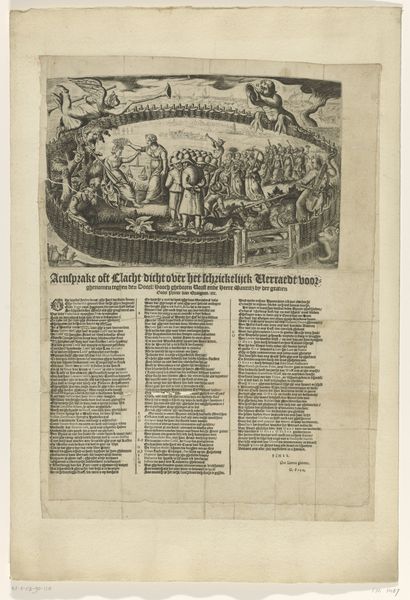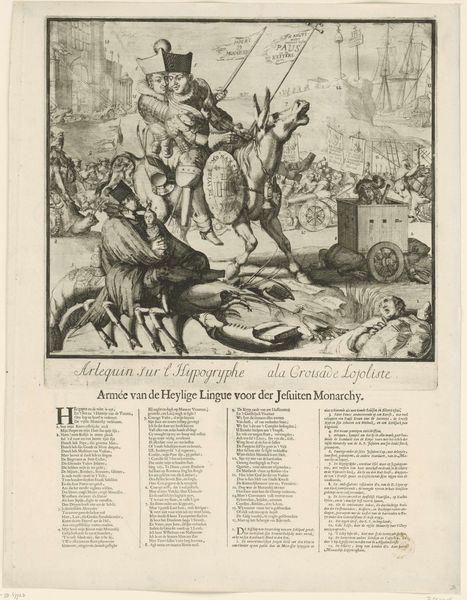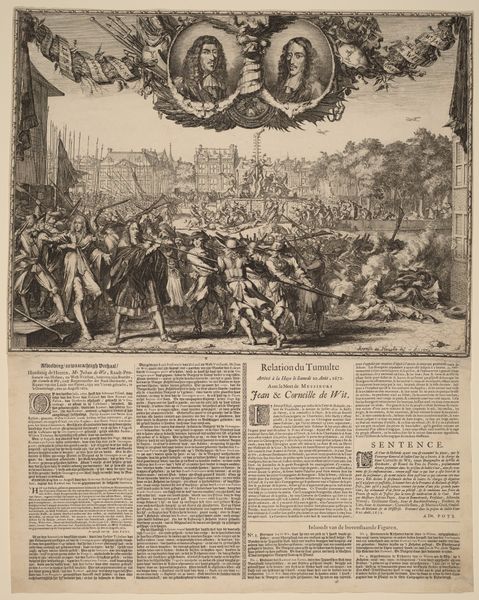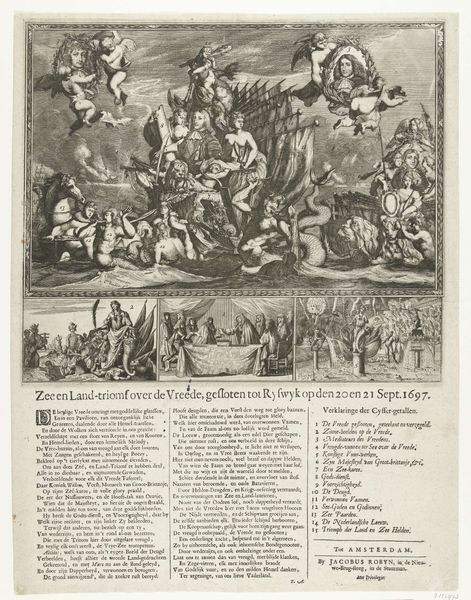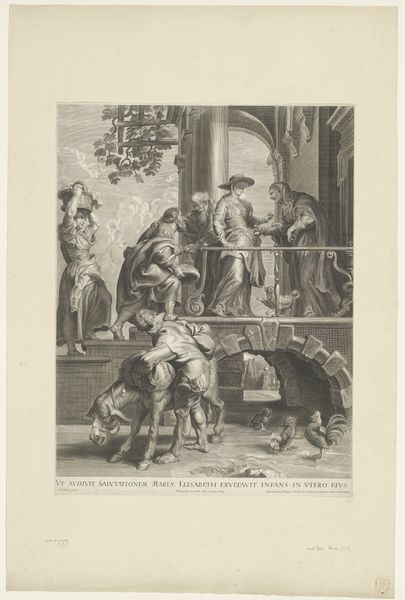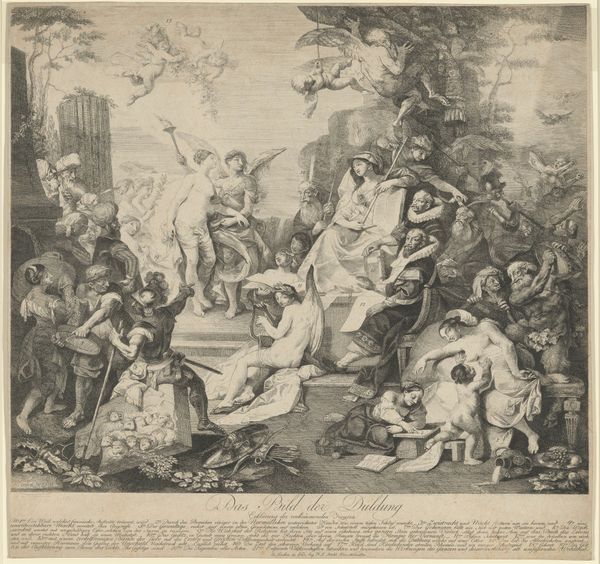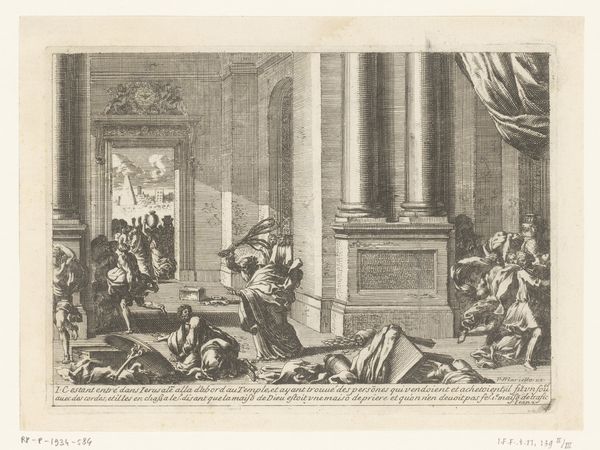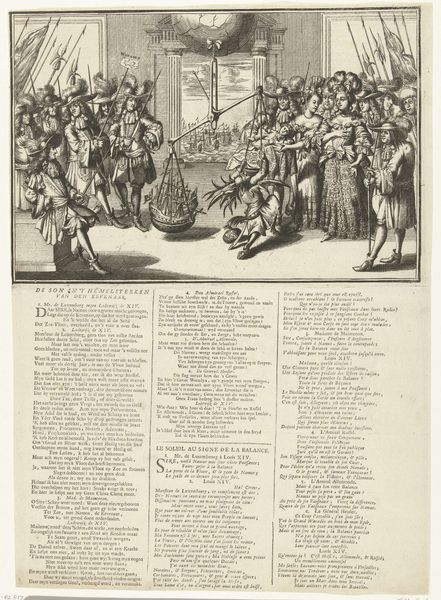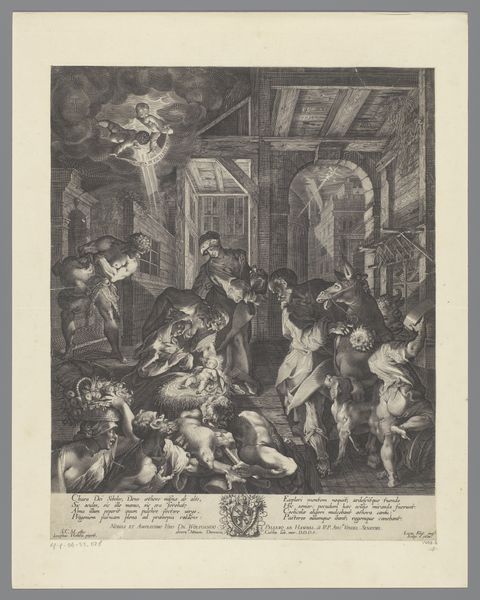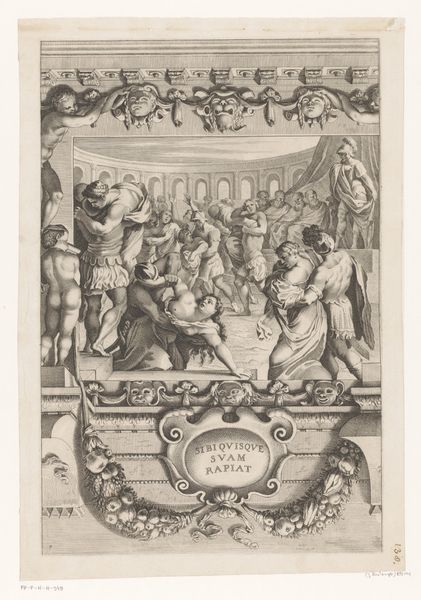
drawing, print, etching, paper, engraving
#
drawing
#
aged paper
#
toned paper
#
narrative-art
#
baroque
#
dutch-golden-age
# print
#
etching
#
paper
#
genre-painting
#
sketchbook art
#
engraving
Dimensions: Sheet: 22 1/16 × 16 9/16 in. (56 × 42.1 cm) Plate: 14 15/16 × 15 11/16 in. (37.9 × 39.9 cm) [uneven edges]
Copyright: Public Domain
Editor: So, this is "Hollands Hollende Koe," or "Holland's Running Cow," a 1690 etching by Gaspar Bouttats, housed at the Met. It looks like a chaotic allegory – there's a cow pulling a pile of bodies and objects, figures lounging... it feels quite overwhelming. What can you tell me about it? Curator: Well, the material realities are key. This isn't just a picture, it's a print. Think about the labor involved in engraving in 17th-century Holland. It’s a commercial enterprise. Consider, what does the proliferation of printed images at this time suggest about Dutch society, its values, and the dissemination of knowledge? Editor: I hadn't considered the printmaking process so explicitly. Are you saying it’s about more than just the image itself, but also about accessibility of that image? Curator: Exactly. The relative ease with which prints can be produced and circulated, in comparison to, say, a painting, alters the social function of art. Consider the socioeconomic conditions that supported the Dutch Golden Age; did an etching like this comment on that wealth or perhaps critique it? Is it purely celebratory, or does the imagery point to something more complicated about consumption, class, and even the use of land? Editor: That's a good point, considering all the bodies and figures loaded into that "running cow". It reminds me that not everyone may have benefited from Dutch expansion. The materiality provides accessibility, but the image itself hints at inherent exploitation in labor. Curator: Precisely. And that tension, between the accessibility of the medium and the potential social commentary within the imagery, that’s where things get really interesting. Editor: So I can look at how the artist uses these materials to reflect broader cultural and political dynamics? I see that contrast now and how I can further investigate social elements through these etchings!
Comments
No comments
Be the first to comment and join the conversation on the ultimate creative platform.
